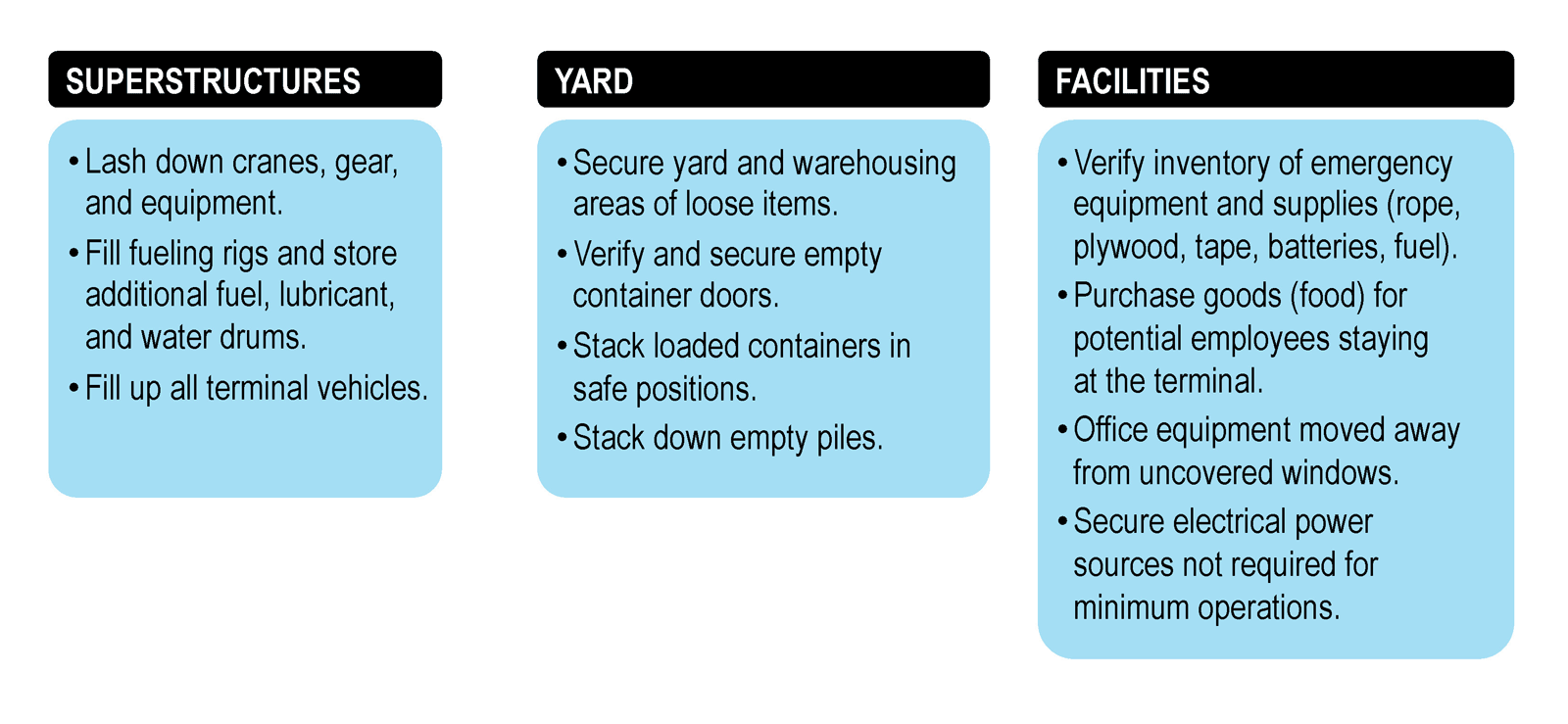Event: Hurricane Harvey, 2017
The Port of Houston suffered a disruption caused by Category 4 Hurricane Harvey in August 2017. The event lasted about two weeks because of ripple effects after re-opening (Bonney J., 2017). Related reconstruction projects lasted 3-5 years (Witthaus J., 2017).
Causes and impact
Hurricane Harvey was the main factor causing the disruption. Texan seaports often experience the recurrent threats of hurricanes, storm surges, sea-level rise and tornadoes (Mohamed A. A. et al, 2020).
Over 40 per cent of the population in the State of Texas was affected by damages to buildings and material losses (Mohamed A. A. et al, Ibid). According to the National Hurricane Center, Hurricane Harvey caused $125 billion in damage, at a cost that exceeded any other natural disaster in American history, except for Hurricane Katrina. Freight transportation across modes was interrupted for over a month (Mohamed A. A. et al, Ibid). Warehouses, refineries and petrochemical plants remained closed over the same period. On 25 August, the United States Coast Guard closed multiple ports along the Gulf Coast, including Houston, Galveston, Texas City, Freeport and Corpus Christi.
By one estimate, the closure of a major port, such as the one in Houston, for one week can cause financial losses of up to $2.5 billion from delayed or canceled business transactions. While the Port of Houston reopened after one week, access restrictions continued due to flooded roads (Odyssey, 2017). The silt carried by floodwaters created shoaling in mission-critical areas (Marine Log, 2017), including at the entrances of the port’s three major terminals. The port needed to perform dredging work in its access channel and inland connections continued to be challenged (Elenaor L., 2017). Freight carriers were reported to be adjusting routes and faced heavy congestion due to flooded roadways and a shortage of drivers (Odyssey, Ibid).
Response and mitigation measures
The port developed a hurricane procedure manual, which gives detailed instructions on the gradual securing and shutdown of terminal facilities as a hurricane event gets nearer (figure 42). After Hurricane Harvey, public authorities were directly involved in the recovery and emergency intervention measures (Marine Log, 2017). On 8 September 2017, President Trump signed a bill approving $15.25 billion in storm aid, and the United States Army Corps of Engineers deployed personnel, worked with local and state agencies and the Coast Guard to clear navigation channels, enabling critical ports to resume operations. Engineers performed generator inspections and installations to provide temporary emergency power at critical locations and provided technical assistance for debris and temporary housing.
Figure 42: Port terminal facility securing measures in the face of a hurricane

Source: Port of Houston (2020.
The Port of Houston allocated up to $2 million to the Corps of Engineers for terminal-related dredging expenses. It also awarded contracts to harden communication capabilities for telephones, data centres and inter-terminal connectivity. Meanwhile, some partial and non-exhaustive responses were implemented by regional oil and gas industry players. Exxon was publicly held responsible for climate-change led disruptions (Harvard Business School, 2017), and thereafter worked on: (i) creating alternative supply routes (using non-US based oil suppliers); (ii) establishing long-term back-up contracts in case of a crisis; and (iii) increasing the safety stock of oil in warehouses and distribution centres before the hurricane season.
Lessons learned and good practice
- Develop clear instructions and guidelines to assist in port preparation when a hurricane event is on the horizon.
- Promote technological modernization and digitization to provide real-time visibility of vessel movements and port operations and allow ports and other stakeholders to share data and conduct predictive analytics.
- Steadily monitor, maintain and upgrade
- Early-warning digital tools are crucial, especially in the case of storms and extreme weather events (Duram Bathgate K., 2021).
- Improve waterway systems, namely access channels due to the destabilizing impacts of hurricanes (flooding and tide surges).
- When improving infrastructure, a port should be considered as part of an interface with the goal of improving its continuity (Schulze A., 2017).
- Response and recovery measures should seek a return to pre-event operations and seize the opportunity to make improvements to generate additional value including by enhancing efficiency and resilience.
